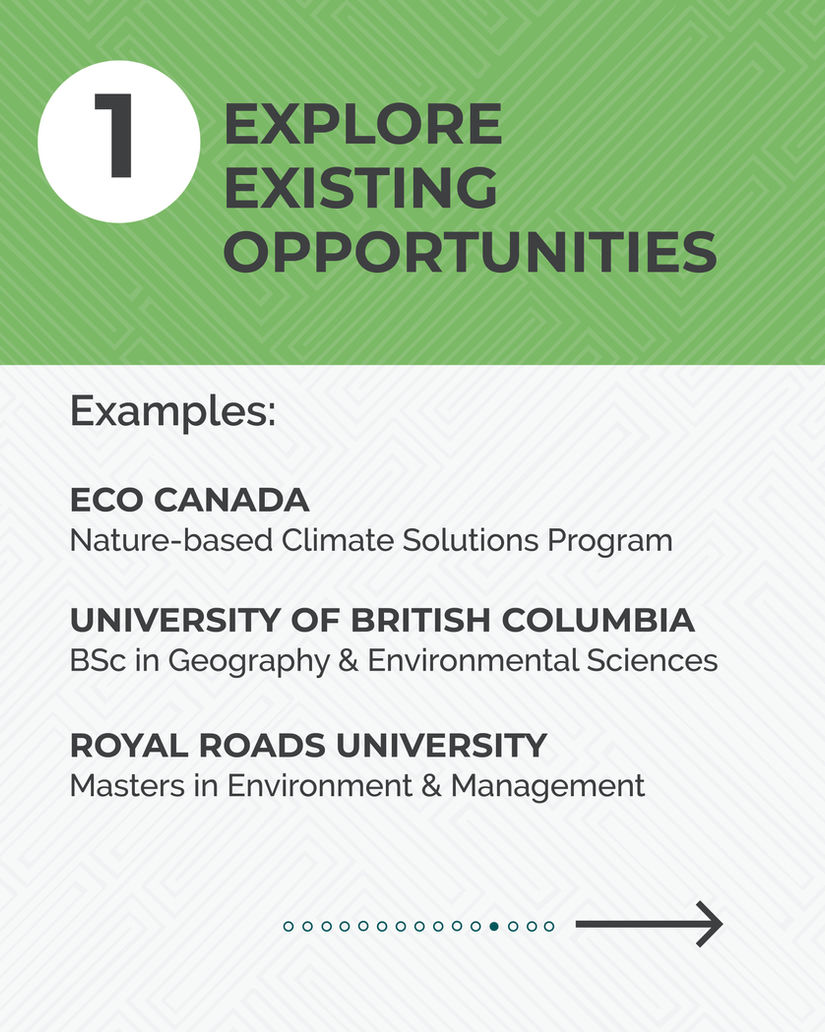Jessica Hutchinson
Executive Director and Ecologist with Redd Fish Restoration Society
What Do They Do?
Jessica’s work is focused on the organization and the function of the organization and helping fulfill their mission. Whether that's working on relationships with the land through the actual restoration or the relationships with the nations.
Project Gallery
Why Does It Matter? Redd Fish is a supportive, place-based organization that helps undo the environmental damage caused by industry. While they can’t scale everywhere, they aim to amplify the importance of restoration, shift public understanding of conservation, and uphold our collective responsibility to repair the harm done.
“I’m motivated by curiosity, by the drive to see whether our restoration efforts truly work. Most of all, I’m motivated by the relationships I build with the places we work and the people who steward these lands.”
How Did They Get There?
BSc in Geography and Environmental Sciences, University Of British Columbia
MSc in Environment and Management, Royal Roads University
Ecologist & Executive Director, Redd Fish Restoration Society
Want To Follow A Similar Path?
University of British Columbia - BSc in Geography & Environmental Sciences
Royal Roads University - Masters in Environment & Management
Jessica’s deep commitment to restoration and relationship-building didn’t begin overnight. Her path to leadership is rooted in both academic training and hands-on experience, shaped by a strong sense of place and purpose. From university studies to a chance internship, her journey with Redd Fish has been one of steady growth and lasting impact.
What do Professional Agrologists do in Watersheds?
Professional Agrologists implementing riparian stewardship activities focus on restoring natural ecosystems and improving watershed health, especially in riparian zones along streams, rivers, and wetlands on agricultural land.
They work alongside, and often ahead of, restoration professionals by conducting detailed riparian health assessments. They evaluate the condition of the land and water systems and develop tailored prescriptions for restoration or management actions.
These recommendations are then discussed collaboratively with restoration professionals and agricultural landowners to create effective, locally informed plans that respect land use and integrate traditional knowledge. The restoration professionals then proceed to plant native species, stabilize eroding banks, and implement projects that enhance biodiversity, water quality, and climate resilience.
What's a Typical Pathway?
Most begin with a degree in environmental science, geography, agriculture, ecology, or biology. Many go on to earn their Professional Agrologist (P.Ag) designation through the BC Institute of Agrologists, which certifies their expertise and allows them to advise on land and water management practices.
Experience in fieldwork, habitat monitoring, or ecosystem assessment is common, often gained through volunteer, internship or employment opportunities with conservation groups, environmental agencies or consulting firms. Some are also trained through specialized training programs (e.g. Environmental Farm Plan Program).
Why Does This Matter?
Riparian areas are essential for healthy watersheds. The riparian area is the transitional zone of land between an aquatic ecosystem (like a stream, river, lake, or wetland) and a terrestrial (land) ecosystem. They support fish and wildlife, filter pollutants, and reduce flooding.
Professional Agrologists work with agricultural landowners to ensure that these areas remain strong and resilient, especially as climate change brings more extreme weather and pressures on the land.

Technology & Innovation
Career Spotlight
Profession: Water Tech Entrepreneur
What do Entrepreneurs do in Watersheds?
Entrepreneurs in water technology and innovation design and develop cutting-edge tools and systems that monitor, treat, and protect water resources in real time. Their work ranges from creating smart sensors and automated water treatment technologies to building data platforms that provide actionable insights for managing watershed health. These solutions are used by a wide range of stakeholders to detect pollution early, optimize water use, ensure regulatory compliance, and respond rapidly to environmental challenges. By leveraging technology, these entrepreneurs help transform traditional water management into a proactive, data-driven practice that safeguards ecosystems and supports sustainable development.
What's a Typical Pathway?
There is no one-size-fits-all path to becoming a water tech entrepreneur. Many founders begin with academic or professional backgrounds in fields such as environmental science, hydrology, engineering, software development, or chemistry. Hands-on experience working in water management, research, or environmental consulting often sparks ideas for innovative solutions. To bring these ideas to market, entrepreneurs commonly seek business skills through startup accelerators, incubators, mentorship programs, or formal education like MBAs or technology management courses. They learn to navigate product development, funding, market fit, and regulatory landscapes. Ultimately, success requires blending technical expertise with entrepreneurial agility to build scalable and impactful solutions.
Why does it Matter?
As pressures on watersheds increase, the need for innovative, responsive, and cost-effective water management tools has never been greater. Entrepreneurs in water technology are essential for bridging the gap between scientific research and practical application. They develop real-time, data-driven solutions that enhance monitoring, control, and treatment of water resources. These tools enable faster, smarter decision-making that protects aquatic ecosystems, safeguards public health, and supports economic growth. By closing gaps between technology and real-world needs, water tech entrepreneurs play a vital role in delivering timely solutions that secure resilient and sustainable water resources for the future.















